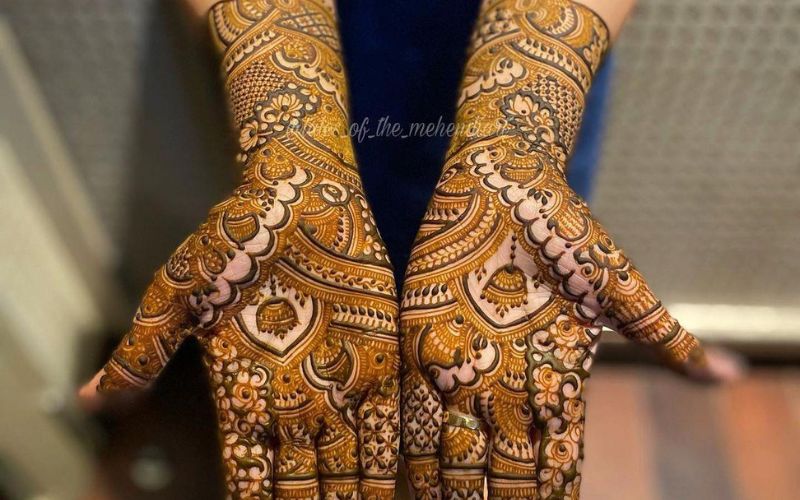Mehendi, also known as henna, is an ancient art form that has been cherished in various cultures for centuries. Traditionally used during weddings, festivals, and other celebrations, Mehendi designs are a symbol of beauty, elegance, and joy. While intricate and complex patterns often steal the spotlight, there is a growing appreciation for simple and easy Mehendi designs. These designs are not only easier for beginners to master but also possess a unique charm in their simplicity.
In this comprehensive guide, we will explore the world of simple Mehendi designs. Whether you are a novice looking to try your hand at henna art or someone who prefers minimalistic designs, this article will walk you through the basics, offer tips, and present a variety of easy-to-create Mehendi patterns.
The History and Significance of Mehendi
Before diving into the designs, it’s essential to understand the cultural significance and history of Mehendi. The use of henna dates back over 5,000 years, with its roots in ancient Egypt, India, and the Middle East. In India, Mehendi is deeply intertwined with cultural and religious rituals, especially during weddings and festivals like Karva Chauth, Diwali, and Eid.
Mehendi is believed to bring good luck and prosperity, particularly for brides. The darker the Mehendi color on a bride’s hands, the more she is believed to be loved by her husband and in-laws. In addition to its symbolic meaning, Mehendi is also known for its cooling properties, making it a popular choice in hot climates.
Getting Started: Materials and Preparation
To create simple Mehendi designs, you’ll need a few basic materials:
- Henna Cone: The most common tool used to apply Mehendi is a henna cone. You can purchase pre-made cones or create your own by filling a plastic sheet with henna paste and rolling it into a cone shape.
- Henna Powder: If you prefer to make your henna paste, you’ll need henna powder, which is made from the dried leaves of the henna plant.
- Essential Oils: Adding essential oils like eucalyptus or tea tree oil to your henna paste can help darken the stain.
- Lemon-Sugar Solution: After applying the Mehendi, a mixture of lemon juice and sugar can be dabbed on the design to enhance the color.
- Plastic Wrap or Cling Film: Wrapping your design with plastic wrap helps keep the henna moist, allowing it to stain more effectively.
Preparation Steps:
- Mixing the Henna Paste: If you are making your paste, mix henna powder with water, lemon juice, and a few drops of essential oil until you achieve a smooth, thick consistency. Let it sit for 6-8 hours for the dye to release.
- Skin Preparation: Before applying the henna, wash your hands or the area where you’ll apply the Mehendi with soap and water. This removes oils and dirt, ensuring a better stain.
- Testing the Cone: Before you start your design, test the henna cone on a piece of paper to ensure the paste flows smoothly.
Basic Mehendi Design Elements
Before creating full designs, it’s helpful to practice some basic elements that form the foundation of most Mehendi patterns:
- Dots: Dots are the simplest element and can be used to fill spaces or create borders.
- Lines: Straight, curved, or zigzag lines are essential for creating the framework of your design.
- Circles: Circles can be used as the centerpiece of a design or as a filler.
- Paisleys: The paisley is a classic shape in Mehendi, resembling a teardrop or mango.
- Flowers: Floral motifs are common in Mehendi designs and can range from simple daisies to elaborate roses.
- Leaves: Leaf patterns can be added to floral designs or used independently for a nature-inspired look.
- Vines and Swirls: These elements are perfect for connecting different parts of a design and adding flow.
Step-by-Step Simple Mehendi Designs
Now that you’re familiar with the basics, let’s explore some easy Mehendi designs that beginners can try. These designs focus on simplicity and elegance, making them perfect for any occasion.
1. Minimalist Floral Design
- Steps:
- Begin by drawing a small circle in the center of your palm.
- Surround the circle with simple petals to create a flower.
- Extend curved lines outward from the flower to form stems.
- Add small leaves along the stems.
- Use dots to fill any gaps and enhance the design.
This minimalist floral design is elegant and perfect for those who prefer a subtle touch of Mehendi.
2. Geometric Pattern
- Steps:
- Start by drawing a square or diamond shape in the center of your palm.
- Create a smaller square or diamond inside the first one.
- Draw parallel lines extending from each corner of the outer shape.
- Connect the lines with small triangles or circles.
- Add dots or smaller geometric shapes to complete the design.
Geometric patterns are trendy and easy to create, making them an excellent choice for beginners.
3. Simple Finger Design
- Steps:
- Begin by drawing a small flower or paisley at the base of each finger.
- Draw a line extending from the flower up the length of the finger.
- Add small leaves or dots along the line.
- Finish by drawing a small circle or spiral at the tip of each finger.
This design is perfect for those who want to keep their Mehendi simple and focused on the fingers.
4. Half-Moon Design
- Steps:
- Draw a half-moon shape on the back of your hand, near the wrist.
- Decorate the half-moon with small flowers, dots, or paisleys.
- Extend vines or lines outward from the half-moon.
- Add leaves or swirls to complete the design.
The half-moon design is a beautiful option for those who prefer a design on the back of the hand.
5. Wrist Bracelet Design
- Steps:
- Draw a straight line across your wrist to form the base of the bracelet.
- Add small flowers, circles, or diamonds along the line.
- Extend lines or vines from the base to create a more intricate pattern.
- Finish with dots or additional small shapes to complete the look.
This wrist bracelet design is chic and elegant, perfect for any occasion.
Tips for Perfecting Your Mehendi Design
Creating a flawless Mehendi design takes practice, but these tips can help you achieve the best results:
- Practice on Paper: Before applying the design to your skin, practice on paper to perfect your technique.
- Steady Hand: Keep your hand steady while applying the henna to avoid smudging.
- Apply Pressure Evenly: Maintain consistent pressure on the henna cone to ensure even lines.
- Let It Dry: Allow the henna to dry naturally for at least 2-3 hours before removing it. The longer you leave it, the darker the stain.
- Avoid Water: After removing the dried henna, avoid water contact for at least 12 hours to allow the color to deepen.
Enhancing the Longevity of Your Mehendi
To keep your Mehendi design vibrant and long-lasting, follow these steps:
- Lemon-Sugar Solution: Dab a mixture of lemon juice and sugar on your design once it’s dry to help darken the stain.
- Wrap It Up: After applying the lemon-sugar solution, wrap your design with plastic wrap or cling film to keep it moist.
- Avoid Water: As mentioned earlier, avoid water contact for 12-24 hours after removing the dried henna.
- Moisturize: Apply a natural oil, like coconut oil, to your design daily to keep it looking fresh.
Conclusion
Simple Mehendi designs are a beautiful way to celebrate cultural traditions or add a touch of elegance to any occasion. Whether you’re a beginner or someone who appreciates minimalistic beauty, these designs are easy to create and perfect for any event. With practice and patience, you’ll be able to master the art of Mehendi and create stunning designs that reflect your unique style.
Remember, Mehendi is more than just a temporary tattoo—it’s an expression of art, culture, and individuality. So, pick up your henna cone, and let your creativity flow!




